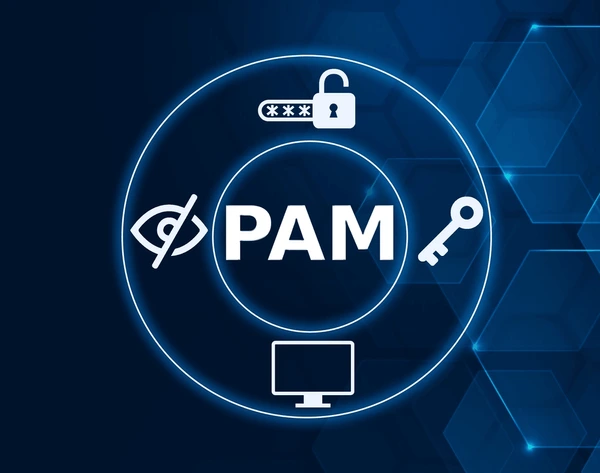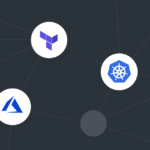
September 18 12:00 PM EDT | September 19 9:00 AM BST | September 25 10:00 AM SGT
Speakers :
Dan Rohan
Product Manager, Boundary
Van Phan
Technical Product Marketing Manager, Boundary and Consul
Revolutionizing Secure Access with HashiCorp Boundary: Adopting a Modern, Identity-Driven Approach
Traditional workflows for accessing infrastructure resources and applications often rely heavily on outdated methods such as Virtual Private Networks (VPNs) or manually managed credentials. While these approaches have served their purpose in the past, they have become increasingly inadequate for modern, dynamic cloud environments. These methods not only introduce operational complexities but also expose your network to significant risks, such as credential sprawl, improper access control, and an expanded attack surface.
In today’s cloud-native world, managing access to sensitive resources requires a more sophisticated approach—one that prioritizes security, scalability, and efficiency. Enter HashiCorp Boundary, a modern solution designed to address these challenges by shifting from traditional privileged access management (PAM) to an identity-driven, zero trust model.
In this webinar, we’ll explore how Boundary goes beyond conventional PAM practices to transform how users access infrastructure securely and efficiently. The session will focus on the key pain points of traditional workflows and how Boundary, in conjunction with HashiCorp Vault, offers a forward-thinking solution to these issues.
Common Challenges of Traditional PAM Workflows
Traditional PAM workflows often rely on legacy tools that introduce significant challenges:
- Reliance on VPNs:
VPNs, while widely used, are often difficult to scale and can open up significant security vulnerabilities. Users connected via VPNs typically gain access to broad parts of the network, which increases the risk of lateral movement in the event of a breach. Additionally, VPNs often require complex configurations and manual management, slowing down operational agility. - Insecure Credential Handling:
Many traditional workflows involve hard-coded credentials or shared passwords, which can easily be mishandled or stolen. Credential sprawl, where too many credentials are distributed across the organization without adequate oversight, becomes a security liability. Managing these credentials securely, ensuring proper rotations, and auditing their usage become cumbersome and error-prone. - Limited Access Control:
Traditional PAM systems often offer coarse access controls, providing too much or too little access based on static rules. This “all-or-nothing” approach doesn’t align with the dynamic nature of modern cloud environments, where workloads and user needs change rapidly.
Key Differences of a Modern PAM Workflow
A modern PAM workflow, powered by HashiCorp Boundary, overcomes these limitations by embracing identity-driven, just-in-time access to resources. Here’s how:
- Zero Trust Security Model:
Boundary adopts a zero trust approach to access management. Instead of implicitly trusting users based on network location (as with VPNs), Boundary continuously verifies users’ identities and only grants the minimum required access for each session. Access is tightly controlled and authorized based on identity, ensuring that users only have access to specific resources at specific times. - Dynamic, Identity-Based Access:
Unlike traditional workflows, Boundary does not rely on static credentials or broad access policies. Instead, it leverages identity-based security to dynamically assign access to users based on their roles and the context of their access request. This eliminates the need for hard-coded credentials, improving security and streamlining access management. - Granular Access Control:
With Boundary, administrators can implement fine-grained access controls, defining exactly which resources users can access and for how long. This not only reduces the risk of unauthorized access but also ensures that users can only access the resources necessary to perform their tasks—nothing more, nothing less. - Seamless Integration with Vault for Credential Management:
Boundary integrates seamlessly with HashiCorp Vault to automate the provisioning of credentials and secrets. This allows users to gain access to resources without ever seeing or managing the underlying credentials themselves. Vault dynamically generates credentials for each session and revokes them as soon as the session ends, further reducing the risk of credential misuse.
How Boundary and Vault Provide Identity-Driven, Secure User Access
Together, Boundary and Vault form a powerful security duo, enabling organizations to adopt a zero trust, identity-driven access strategy across their infrastructure.
- Boundary focuses on enabling secure remote access to infrastructure resources based on identity, enforcing session-level access controls without exposing the network to users. It dynamically grants access to specific systems, ensuring that users can only interact with the resources they’re authorized to use.
- Vault, on the other hand, manages and automates the provisioning of secrets, credentials, and certificates. Vault generates ephemeral credentials that are only valid for the duration of a session, further enhancing security by eliminating long-lived credentials that could be compromised.
Key Benefits of Using Boundary and Vault
- Reduced Attack Surface:
By eliminating the need for VPNs and hard-coded credentials, Boundary and Vault significantly reduce your network’s attack surface. Users never have full access to the network, and credentials are tightly controlled, limiting the opportunities for malicious actors to exploit vulnerabilities. - Simplified Access Management:
Managing access in cloud-native environments can become complex, but with Boundary’s identity-driven approach, access is simplified and automated. Administrators can quickly grant or revoke access, manage policies, and track usage—all from a central control plane. - Improved Security and Compliance:
With granular access controls, session recording, and automated credential management, Boundary and Vault help organizations meet strict compliance requirements while improving overall security posture. You can ensure that all access to sensitive infrastructure is logged, monitored, and tightly controlled.
Conclusion
Join our live webinar to discover how HashiCorp Boundary and Vault can transform your approach to secure user access, allowing you to adopt a zero trust security model that scales with your business. Learn how these tools provide identity-driven, dynamic access to resources while reducing your network’s attack surface and eliminating the risks associated with traditional PAM workflows.
Register for the Webinar
For More Information : HashiCorp
Follow us for more Updates














